The well known, formerly enslaved, black abolitionist, Mary Prince, cogently argued in her autobiography in 1831: “How can slaves be happy when they have the halter round their neck and the whip upon their back?”
Prince was directly confronting the lie of slave owners and other apologists for slavery that enslaved Africans were more contented than the English working class.
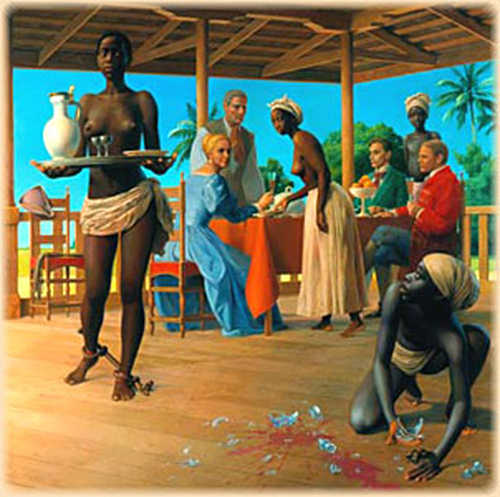
(Courtesy Netssa.com)
Prince had witnessed the daily beatings of small children whether they behaved “well or ill”. She personally experienced the degradation of working in the salt ponds of the Turks and Caicos Islands from as early as four o’clock in the morning; of being severely horsewhipped for marrying a free man without the knowledge of her enslavers.
Other Black Caribbean abolitionists, Olaudah Equiano, Ashton Warner and Ottobah Cugoano, wrote of similar experiences in other Caribbean islands. The enslavement experience in Trinidad was no different.
Unfortunately, the misinformation on the main signpost on the Lopinot Historical Complex was extracted directly from the works of post-independence writers, including JD Elder, Michael Anthony, Calvin Saunders and Archibald Chauharjasingh.
This fact should be a lesson to all who underestimate the colonial education system as agency in the profound colonisation of the mind. Mary Prince and other black abolitionists formed no part of that curriculum.
Writing in 1973, Elder described Compte de Lopinot as a “notorious French planter,” who was strongly against emancipation, yet he did not question the context or the accuracy of the account of him bringing “one hundred faithful slaves” to Trinidad, or, that he was “being kind to his slaves”.
In a 1974 publication, Michael Anthony similarly resurrected the paternalistic portraiture of “a good and kindly Count”, immediately after associating him with hanging Africans on a cashew tree as a “pastime”.
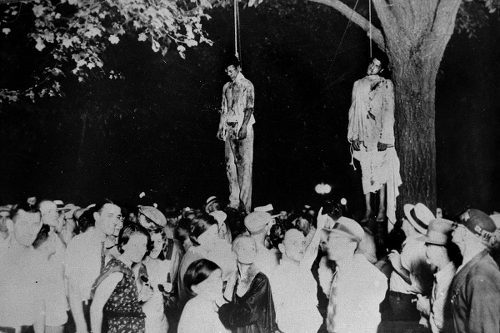
I am not implying that the works referred to here should define the total value of these men’s contribution to the development of the post-colonial Caribbean. But ignorance is not a virtue when publishing historical claims. The advocacy for Lopinot’s benevolence and African innate servility was counter-revolutionary to Black Power.
What the country needed post-1970 was a complete overhaul of colonialist pedagogy. Instead these works repackaged every facet of the fictive romance of Lopinot, beginning with his escape from Saint Domingue/Haiti.
For example, Michael Anthony writes, “The story is told that he was so beloved by his slaves that in the heat of the revolution they carried him on board a vessel by hiding him in a barrel which they passed off as part of a cargo of sugar.”
Although Emerita Professor of history Bridget Brereton debunked much of this Eurocentric idealism in her 1981 book, A History of Modern Trinidad, the romanticised narrative of the kind-hearted slave masters and idle Africans of La Reconnaissance estate continued unabated.
In 1982 the National Cultural Council commissioned Chauharjasingh to write the book, Lopinot in History. The writer’s opening statement was so surreal, it seemed to promise a work of historical fiction rather than evidence-based historical analysis as implied in the title: “The story of Lopinot is one of the glowing romance and thrilling adventure, no less picturesque than numerous tales of Caribbean conquests.”
This romantic history soon began to infiltrate the secondary schools’ social studies textbooks with the official sanction of the Ministry of Education, which actually published Saunders’ book, The Story of Count de Lopinot, in 1988.
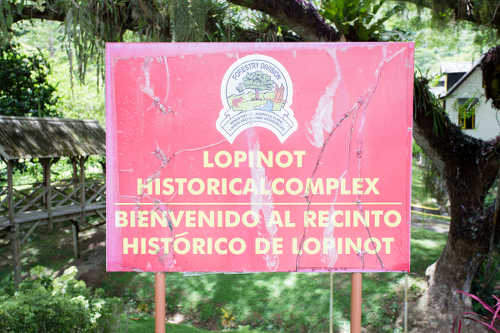
The story of “100 loyal slaves” voluntarily leaving Haiti with Compte de Lopinot in 1798 and hiding him in a barrel, as recounted by Anthony, is not only false but also patently absurd. The claim of archaeologists Neal Lopinot and Marcie Venter that only 75 “enslaved individuals” fled Haiti with Lopinot is no less absurd (article in Basil Reid, ed. Encyclopedia of Caribbean Archaeology).
It is inconceivable that a large body of “slaves” could independently embark on a British ship bound for Jamaica without their “masters”. If such had happened, they would certainly have been considered “runaways”, and an extreme danger to the safety of those on board.
The fact, however, is that they were not slaves at all, because the French legislature had emancipated all enslaved Africans in their colonies since 1794.
The French emancipation law of 4 February 1794 was published in French and English in the London Morning Post a few days after its promulgation. So popular was this newspaper that it was sometimes cited in Parliament. (See Claudius Fergus, Revolutionary Emancipation).
There is no question, therefore, that the British colonial authorities knew of the emancipation and enfranchisement of Africans throughout the French Empire.
When the British army withdrew from Haiti in 1798 (after its defeat by Toussaint Louverture), Lopinot left with them for Jamaica. Many emancipated Africans also left for Jamaica, under the assumption of protection of the British army.
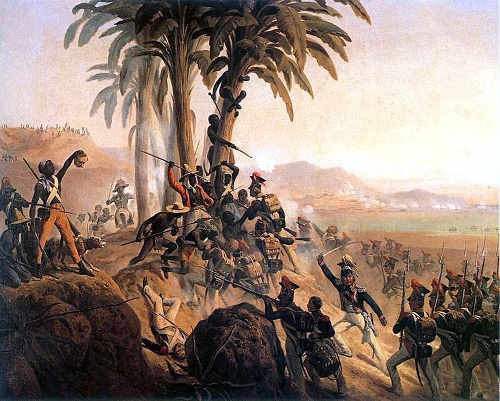
It should also be noted that the British army in Haiti was heavily reliant on African soldiers and non-combatants called “pioneers”, who were promised freedom and land for their loyalty. On reaching Jamaica, Lopinot successfully lobbied the Jamaican authorities and immorally reclaimed a large number of these free Africans as his “slaves”, whom he brought to Trinidad under British slave trading laws then in force.
The Jamaican plantocracy was eager to rid the colony of these black revolutionaries, especially in the wake of the Second Maroon War, which ended just two years earlier. Accordingly, over 400 of the fittest were sold to Lopinot and his cohorts heading to Trinidad, while over 1,000 were shipped to Martinique to be sold on the open slave market. (See Alejandro Gomez, Le Spectre de la Révolution Noire).
Nevertheless, because French imperial emancipation was still in effect, Britain was clearly in violation of international law by allowing Lopinot and his Haitian cohorts to re-enslave these free Africans. It is for this reason that I refer to La Reconnaissance contingent as Lopinot’s hostages.
Another side to this sad tale of double enslavement of Lopinot’s hostages is that their re-enslavement also violated the time-honoured principle (dating back to the ninth and tenth centuries) prohibiting Christians from enslaving other Christians.
Even when Pope Nicholas V’s Bull of 1455, Romanus Pontiflex, had sanctioned the enslavement of “pagan” and Muslim (Saracens) Africans, he implicitly excluded African Christians, including Christianised Africans in the Canary Islands.
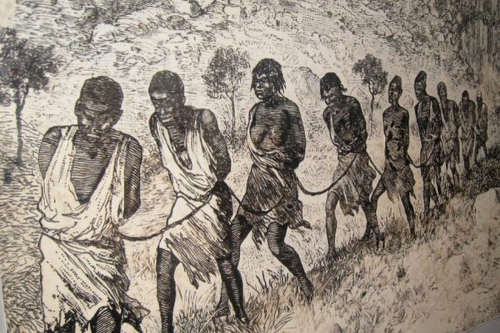
The Portuguese, for example, made no attempt to enslave Coptic (now Tawahedo) Christians of Ethiopia after arriving there in the sixteenth century.
This principle of Christian brotherhood was known to the Kings of Kongo, who complained to the Papacy about Portuguese slave trading in the region. Under French colonial policy, African captives were baptised shortly after the start of their enslavement in their Caribbean colonies.
It goes without saying, therefore, that the Africans who fled the revolution in Haiti were not only free under the laws of a Christian state; they were also Christians in a Christian Empire, protected by ancient laws and conventions.
Most sources refer to the fictional “100 slaves” that Lopinot allegedly brought to Trinidad in 1800: the same number that put him in a barrel in Haiti; the same number that went to Golden Grove estate in 1800; the same number that he took to the hills of the Northern range to establish La Reconnaissance in 1806.
The first official “census” of enslaved people in Trinidad was in 1813. The register for Lopinot’s La Reconnaissance estate recorded 71 Africans, only 56 of whom would have been in Haiti. Historians have never previously questioned these statistics, nor the fate of the 44 “missing” Haitians.
In 1822, the number of people enslaved on La Reconnaissance declined to 41, even after new purchases from the internal “slave” market. The disappearance of more than 30 enslaved Africans from the register three years after Lopinot’s death in 1819 raises serious questions.
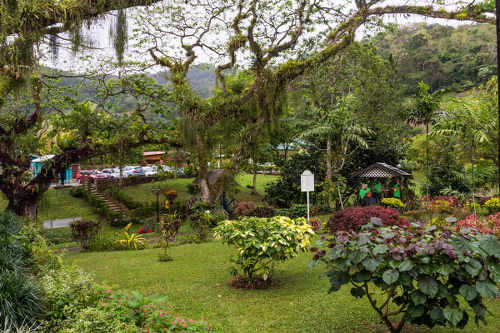
(Copyright Pan Jumbie)
If they died on the estate, it could have been from a major epidemic or extremely inhumane conditions. Alternatively, were these “loyal” and “faithful” hostages sold to sugar planters who continued to open up new plantations?
As late as 1833, the Protector of Slaves Report indicated that 47% of the 64 Africans on La Reconnaissance were beaten with cat o’nine tails over a six-month period, by far the highest percentage of whippings in the Arouca-Tacarigua District.
One woman on La Reconnaissance named Francoise complained to the Protector of Slaves that the new owner, Mr Gilman, spitefully banned her husband, a free man, from visiting her on the estate. The records also show that some of the original African Haitian hostages had died in slavery on La Reconnaissance.
The story of “The Hanging Tree” on La Reconnaissance estate survived as a testimony to this notorious record of inhumanity against a group of Africans whose freedom was criminally taken away from them by duplicitous means.
Indeed, Haiti had declared itself an independent republic in 1804, two full years before the establishment of La Reconnaissance. Had Lopinot’s hostages remained in the colony, the survivors would have been proud citizens under the most progressive constitution in the Atlantic world.
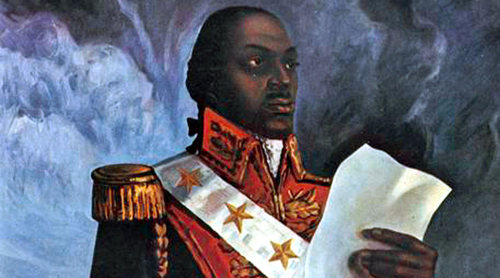
Hopefully, changing the Lopinot signpost will stimulate students and other enthusiasts of history to continue questioning the many distorted colonial narratives as well as the monuments that support them, such as the Columbus statues, the historical images in our nation’s textbooks, the personalities after whom the streets of our towns and villages are named, etc.
My own research is focussed on uncovering other sites of Haitian hostages in Trinidad: Compte de Lopinot was not the only French royalist from Haiti to receive a compensatory parcel of land in Trinidad. Some names are familiar, like Baron de Montalambert; others are not, like the Compte de Montagnac.
Editor’s Note: Click HERE for Part One as Dr Claudius Fergus reveals the history of the Lopinot Historical Complex; and why Trinidad and Tobago deserves the truth.
Claudius Fergus is a retired Senior Lecturer in the Department of History at UWI’s St Augustine Campus who specialises in the abolition of British colonial slavery and its transatlantic slave trade.
His major work on the subject is Revolutionary Emancipation: Slavery and Abolitionism in the British West Indies (2013). He has other extensive publications in peer-reviewed journals and edited books.
 Wired868 Wired868 for smart sport news and opinion
Wired868 Wired868 for smart sport news and opinion






